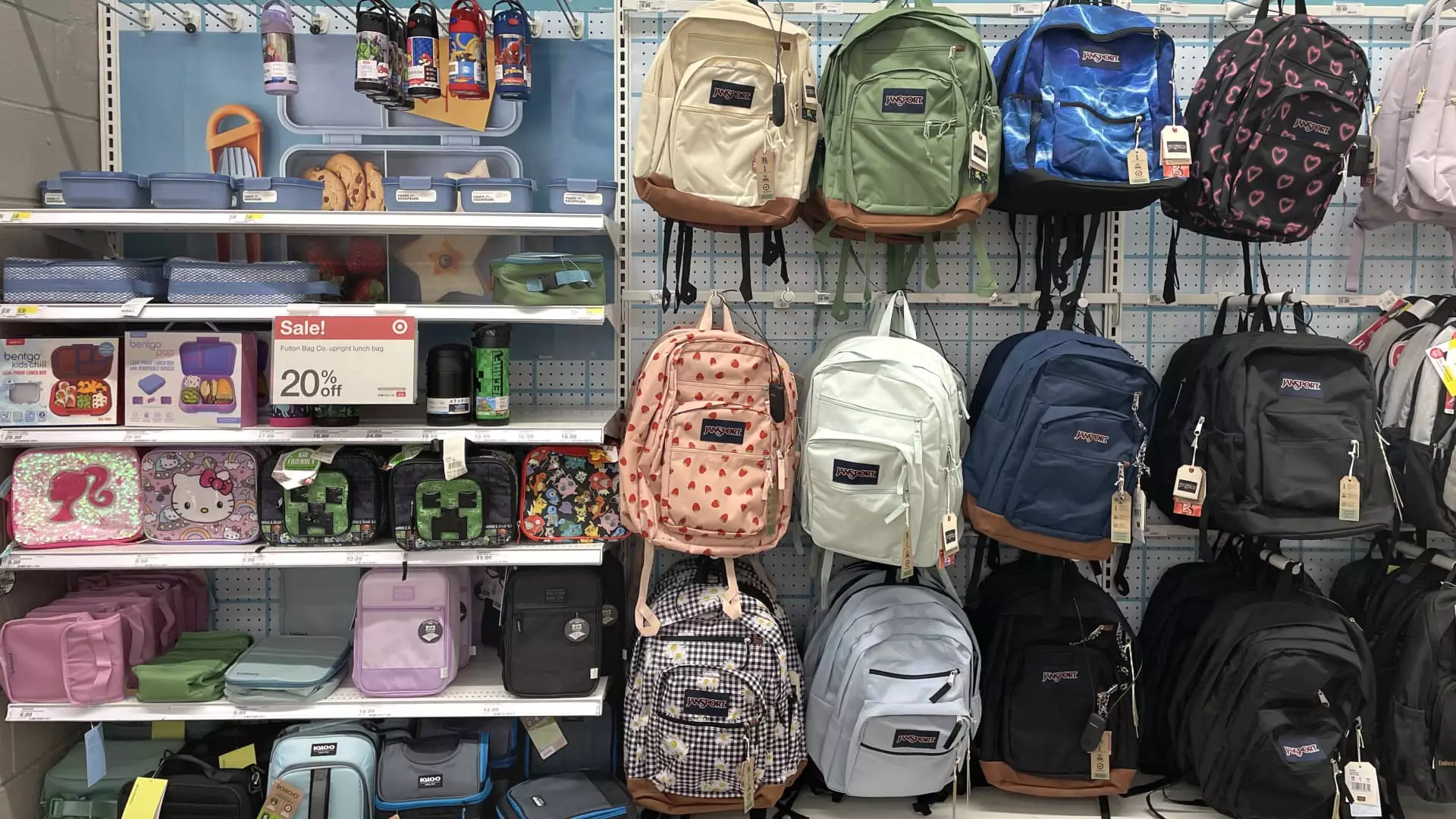Despite the narrative of a cooling inflation rate, the reality for everyday families remains far more complicated. Official indicators such as the producer price index suggest that inflation might be easing, but this is a misleading comfort. The recent policies introduced by President Donald Trump, particularly the new tariff measures, cast a long shadow over the modest gains in affordability that consumers might perceive. These tariffs, designed ostensibly to bolster domestic industry and assert economic strength, in practice threaten to inflate consumer prices further, especially in sectors critical to families preparing for the school year. The gap between official inflation metrics and the lived experiences of families growing more strained illuminates the fundamental flaw: monetary statistics do not always translate into real-world benefits.
The strategy to delay tariff hikes, as seen in recent executive orders, provides only temporary relief. This approach masks the underlying volatility and uncertainty that threaten to destabilize household finances. When tariffs eventually take full effect, they are poised to ripple through supply chains, raising costs for essential goods—from backpacks and school supplies to electronics and clothing. This future, looming in the background, undermines the optimism many families could cling to, replacing it with a cautious outlook rooted in apprehension about the economic landscape.
Back-to-School Spending: A Mirror of Consumer Anxiety
The annual ritual of back-to-school shopping reveals much about consumer confidence and financial priorities. The numbers speak volumes: a slight decrease in overall spending from $586 to around $570 per child signals cautiousness among parents. Despite higher prices, families are tightening their belts, cutting back on extras, and even switching brands to stretch every dollar further. Deloitte’s survey, capturing the opinions of over a thousand parents, highlights a significant behavioral shift: nearly two-thirds of families plan to buy earlier, mostly to avoid potential price hikes linked to tariffs or supply chain disruptions.
This behavior underscores a fundamental tension. On one hand, there is a desire to prepare children adequately for the academic year; on the other, economic anxiety prompts austerity. Parents are faced with difficult choices—sacrificing non-essential items, foregoing new clothes, or opting for less preferred brands—all as a defense mechanism against unpredictable market conditions. The rising tendency to buy early and stockpile reflects a broader mistrust in the stability of prices, a mistrust exacerbated by ongoing tariff uncertainties.
Tariffs and Their Disruptive Impact on Household Economics
The recent policy decisions surrounding tariffs expose how political maneuvering can have tangible consequences for ordinary Americans. The initial decision to impose higher tariffs on a broad array of imports created an atmosphere of economic insecurity. Although these tariffs were paused briefly, the delay is merely a postponement rather than a resolution. The long-term effects—an increase in consumer prices—are inevitable unless these trade policies are reconsidered or rescinded.
The warnings from economists like Jack Kleinhenz are clear: sustained hikes in tariffs will inevitably lead to higher retail prices and a sag in consumer spending. This is detrimental not only economically but socially, as it widens the inequality gap—penalizing lower and middle-income families who have fewer options to absorb these increased costs. The impact on back-to-school shopping, often a critical period for family budgets, illuminates how such policies can inadvertently harm the very people they aim to protect or strengthen.
Consumer Behavior in a Climate of Economic Uncertainty
As tariffs threaten to inflate prices further, consumers are adjusting their shopping habits in ways that reflect a broader loss of confidence. The increased willingness to switch brands or delay purchases signals a household landscape marked by cautious optimism—if any at all. The trend of starting shopping early is a strategic move to preempt anticipated price increases, revealing a deep-seated insecurity about future expenses.
It is disheartening that political decisions driven by economic nationalism or protectionism often overlook the immediate consequences for families. The drive to prioritize domestic industries can unintentionally translate into reduced purchasing power for the broader population. In this context, the American middle class faces the paradox of being caught between economic policies that promise strength but deliver relative hardship, especially during seasons like back-to-school, where spending is critical.
—
The ongoing debate over tariffs, inflation, and household affordability underscores complex societal questions about priorities and fairness. While some see tariffs as a means to reclaim economic independence, their hidden costs threaten to undermine the financial stability of countless families. A balanced approach that considers both national interests and the well-being of ordinary citizens is urgently needed—before the backlash of higher consumer prices erodes the very foundation of economic progress.

